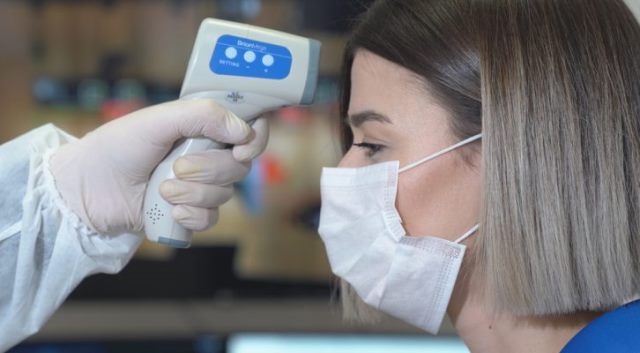Measuring humans temperature can be done in several ways. One method to measure a person’s surface temperature is with the use of non-contact infrared thermometers.
Infrared thermometers may be used to reduce cross-contamination risk and minimize the risk of spreading disease.
While typically 98.6°F (37.0°C) is considered a “normal” temperature, some studies have shown that “normal” body temperature can be within a wide range, from 97°F (36.1°C) to 99°F (37.2°C).
Before infrared thermometers are used in humans, it is important to understand the benefits, limitations, and proper use of these thermometers. Improper use of infrared thermometers may lead to inaccurate measurements of temperature.

Infrared Thermometer for Humans
The best-infrared thermometer for body temperature in humans is any laser thermometer manufactured by a reliable company with lots of experience in measuring temperatures.
Your decision should be based on fair prices charged by the manufacturer to avoid the problems of price gouging that are affecting many supplies and products during the pandemic scare.
The infrared thermometer has become increasingly popular for taking surface temperatures from a distance – there’s no need to come into physical contact with the item or person.
The use of an infrared thermometer in humans has soared since the pandemic threat spread to western countries. Many businesses and public institutions use an infrared thermometer to screen large numbers of people to detect those who might be sick and running a temperature.
How to use Infrared Thermometer?
Before you take an infrared thermometer for temperature measurement in humans, there is something you should know about it:
- The infrared thermometer measures an area, not just a dot.
- The longer distance you are aiming at, the bigger the area is for measurement.
- You need to know the infrared thermometer distance to spot ratio so that you could get close enough to target for measurement and get the accurate result.
- If you can’t achieve accurate measurements with an infrared thermometer, that might not rule out using an infrared temperature sensor completely.
- Besides, steam or dust can affect the accuracy of the infrared thermometer.
- You’d better watch your surroundings before you take the measurement.
- Always keep the thermometer lens clean and no scratches.
- Allow two or three more times for temperature measurement to get to the most accurate results.

Infrared Thermometer for Humans
Infrared thermometers allow users to measure body temperature quickly and noninvasively. Infrared thermometers for humans consist of an IR probe, electronic circuitry, a microprocessor, and an LCD or LED display.

Can you use Infrared Thermometer on humans?
Yes, you can use a general-purpose medical infrared thermometer to measure human-forehead temperature. Significant changes in the recording of human body temperature have been taking place worldwide in recent years.
